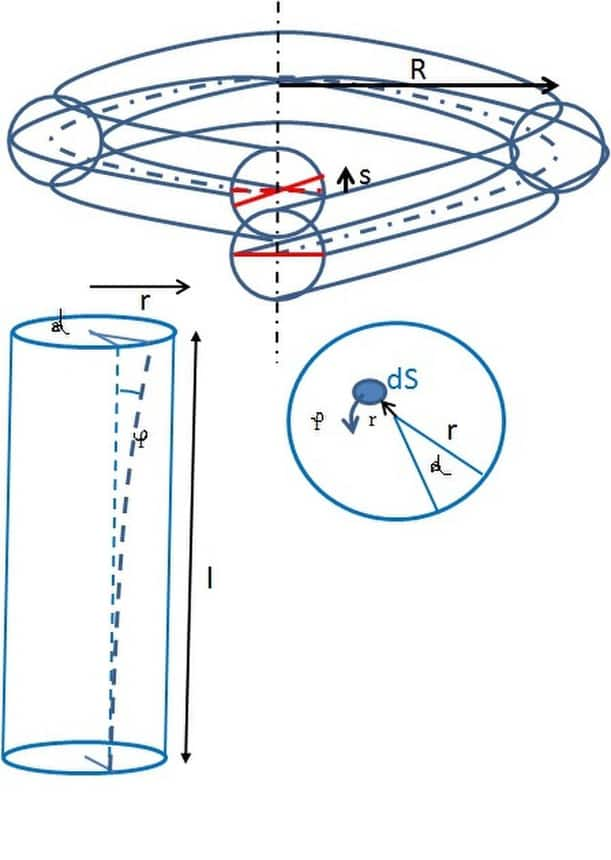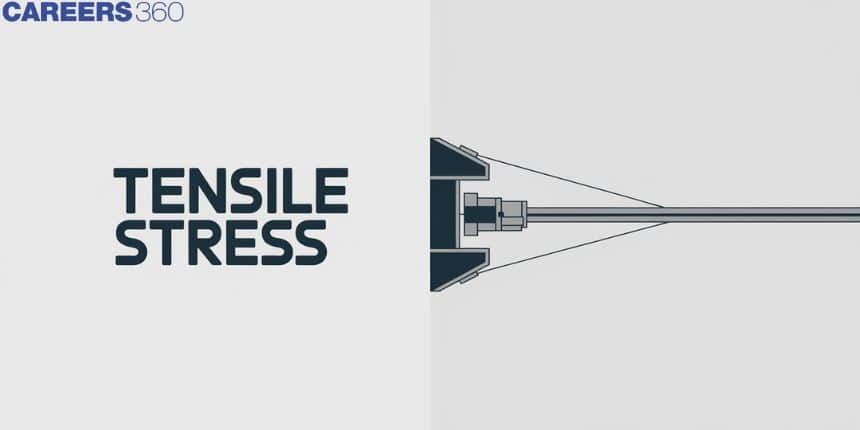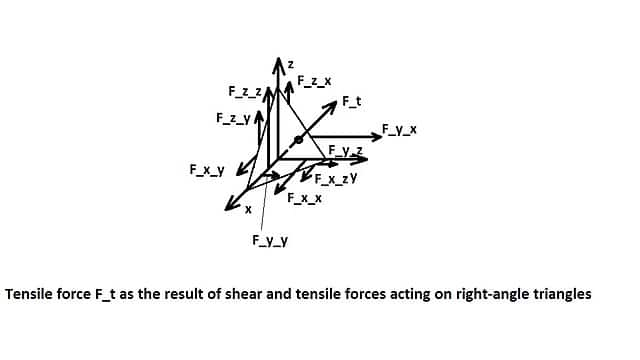Tensile Stress - Definition, Meaning, Formula, Example, FAQs
Tensile Stress
The external force per unit area of the material that causes the substance to stretch. The strength of structures of equal cross-sectional area loaded in tension is independent of the shape of the cross-section.


Also read -
- NCERT Solutions for Class 11 Physics
- NCERT Solutions for Class 12 Physics
- NCERT Solutions for All Subjects
Tensile strength and tensile stress
Tensile stress is a type of stress that occurs when the length of the material increases in the direction of the applied force.
Let's look at the many types of stress:
- Normal stress
The force created over a unit area of a body when a force works perpendicularly over an area of that body is called the Normal stress.
- Tensile stress (T)
One of the types of normal stress is tensile stress.
An applied force or load that leans to stretch the material in the direction or axis of the force applied causes tensile stress.

Formula of tensile stress-
If the force applied perpendicular to the surface is F and the surface area is H, the tensile stress (T) is calculated as follows:
Units in SI System:
$T=\frac{F}{H}$
$
T=\frac{\mathrm{N}}{\mathrm{~m}^2}=\mathrm{Pa}(\text { pascal })
$
$
1 \mathrm{~Pa}=1 \mathrm{~N} / \mathrm{m}^2
$
Dimension of tensile stress-
$M^1 L^{-1} T^{-2}$ is a dimensional formula for tensile stress.
Some tensile properties-
The following tensile properties can be computed when a tensile force is applied to the material:
- Elastic modulus, also known as modulus of elasticity, is the stiffness of a substance. When the deformation is elastic, it is defined as the ratio of stress and strain. The stress-strain curve is used to calculate elastic modulus.
- UTS (ultimate tensile stress): When a force is exerted, it is defined as the maximum stress that a material can withstand. When materials are pushed beyond their UTS, cracking occurs.
- The ratio of tensile stress to two times the material's Young's modulus is known as the modulus of resilience.
- Fracture stress is defined as the greatest stress that a crack can withstand before it breaks down.
|
Related Topics, |
Tensile strength definition and tensile strength formula
Anything can tolerate stress or an external force, but as the force is applied more frequently, the object reaches the breaking or fracture point.
The maximum stress a material can endure without fracture before breaking is known as ultimate tensile strength.
It determines how much force is required to stretch or pull something like rope, wire, or any structural rod or beam to the point of fracture or breakage.
The breaking strength (Ts) of an axial load material is calculated as follows:
U = The force that results in a fracture or a break.
V = Material's cross-sectional area
$\frac{U}{V}=T s$
Pascal or Newton per meter square (N x m -2) is S.I. unit.
Difference between tensile stress and tensile strength-
|
Sl. No. |
Tensile stress |
Tensile strength |
| 1. | It is defined as a force per unit area that is related to stretching and denoted by the symbol σ. | The amount of tensile stress a material can bear before breaking is indicated by the letter s. |
| 2. | σ = F/A is the tensile stress in tensile stress in tensile stress in tensile stress F is the acting force. A refers to the area. | s = P/a is the formula. Where, The tensile strength is denoted by the letter s. P is the force required to break A is the cross-sectional area |
Also, check-
- NCERT Exemplar Class 11th Physics Solutions
- NCERT Exemplar Class 12th Physics Solutions
- NCERT Exemplar Solutions for All Subjects
NCERT Physics Notes:
Frequently Asked Questions (FAQs)
Tensile stress occurs when an applied load causes the material to stretch in the direction of the applied load, or in other words, when the material is pulled.
Stress continues to rise during necking while the actual cross-sectional area decreases. When stress is estimated using the original cross-sectional area (nominal curve), however, stress appears to be reduced.
Tungsten has the highest tensile strength of any pure metal, with a tensile strength of up to 500,000 pounds per square inch at room temperature. It possesses the maximum tensile strength, even at temperatures above 1,500°C.
Tensile stress is positive in physics and engineering, while compressive stress is negative.
The force necessary to pull something like a rope, wire, or a structural beam to the point of failure is known as tensile strength. A material's tensile strength is the highest amount of tensile stress it can withstand before failing, such as breaking.
The force per unit area induced in the body in response to an externally applied force that tends to elongate or stretch the body is known as tensile stress.
Also Read
02 Dec'24 12:36 AM
20 Nov'24 10:36 AM
19 Nov'24 01:38 PM
17 Nov'24 10:04 AM
12 Nov'24 11:53 PM
12 Nov'24 10:14 PM
12 Nov'24 09:30 PM
12 Nov'24 02:20 AM
12 Nov'24 02:19 AM